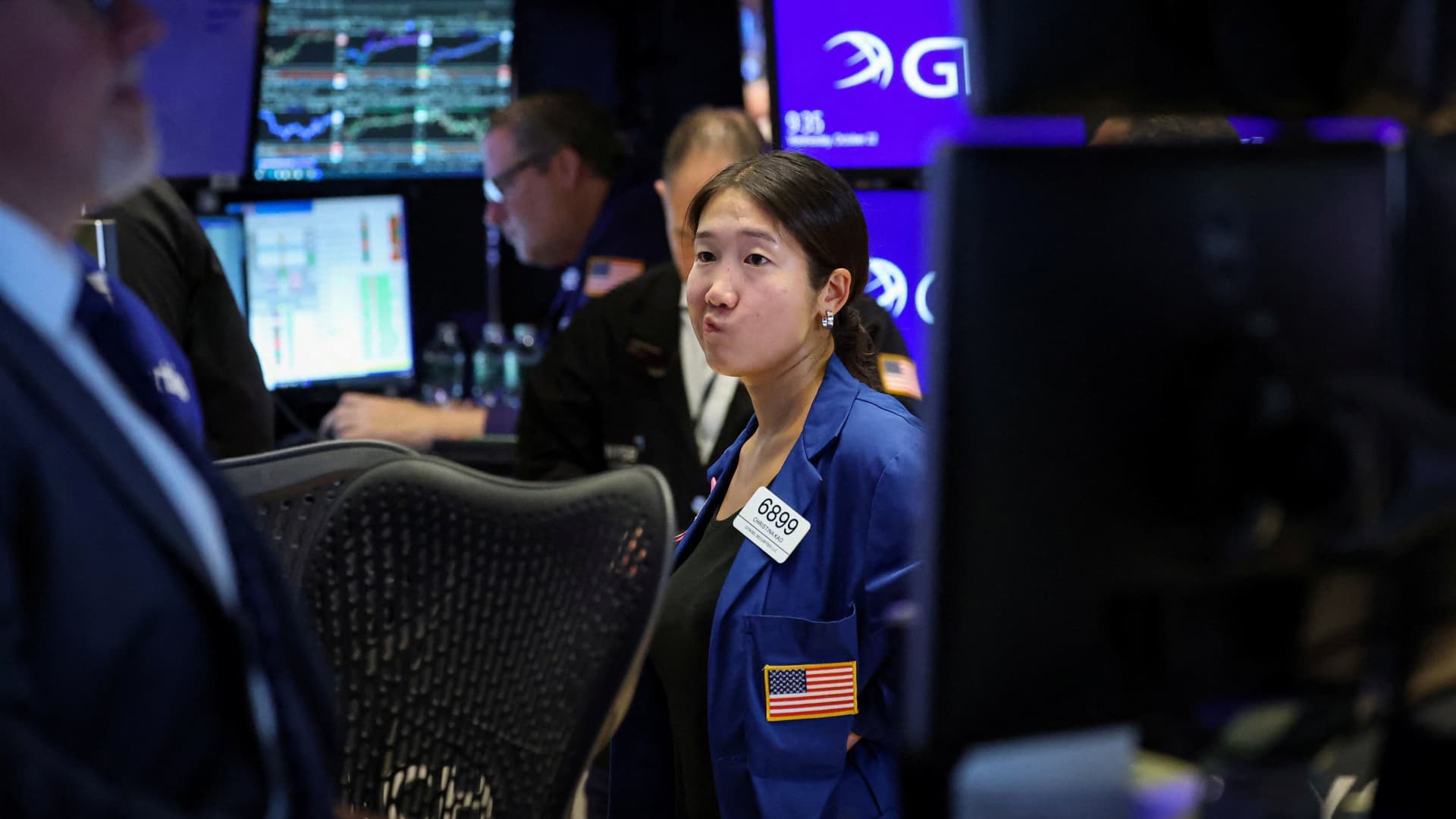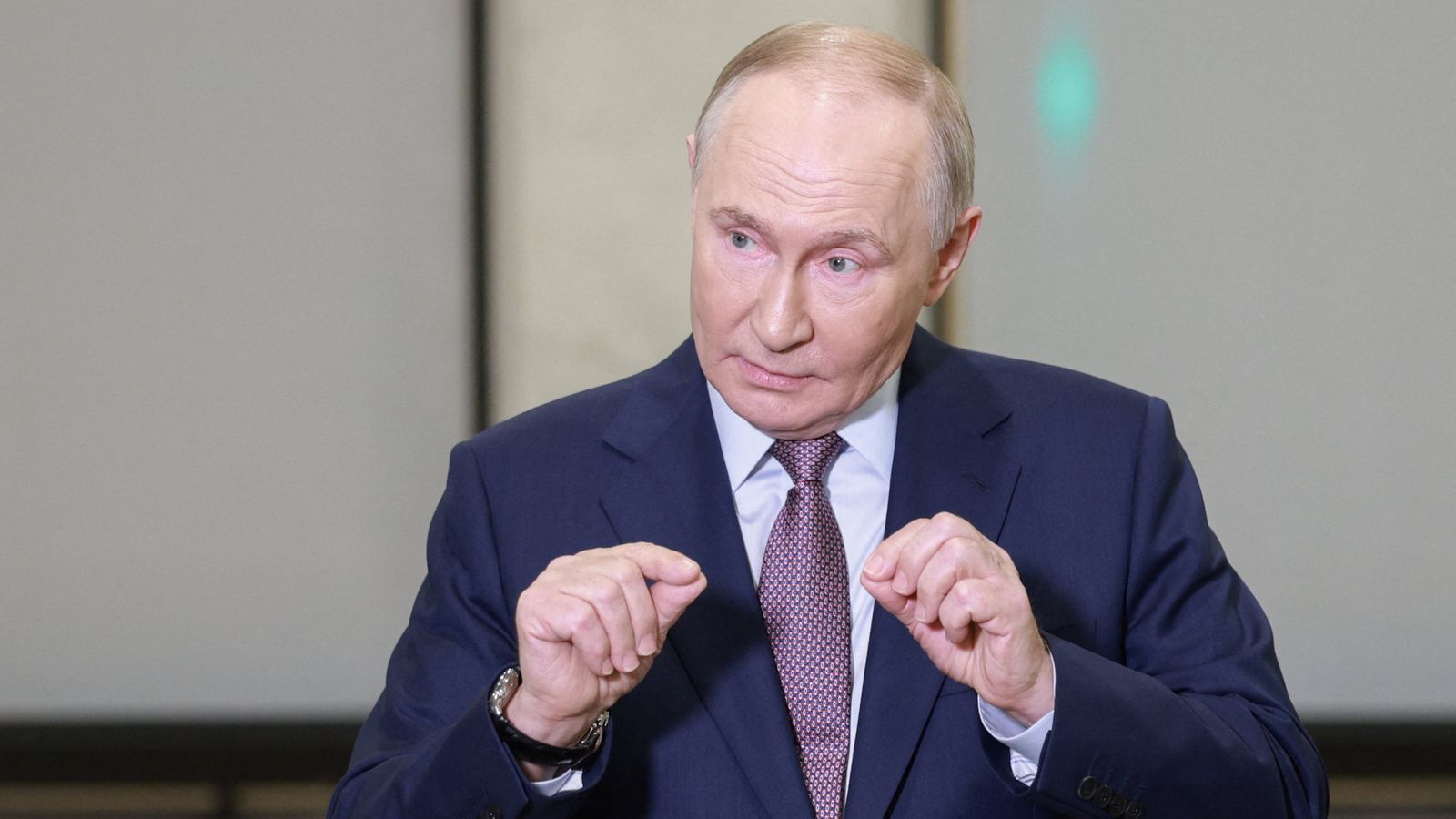Thousands of men with advanced prostate cancer in England are to be offered a drug that can halve the risk of death.
In guidance published on Friday, the National Institute for Health and Care Excellence (Nice) gave the green light to…

Thousands of men with advanced prostate cancer in England are to be offered a drug that can halve the risk of death.
In guidance published on Friday, the National Institute for Health and Care Excellence (Nice) gave the green light to…
Central banks have moved interest rates sharply in recent years, but the link from policy rates to corporate investment remains a black box. Do cheaper loans actually cause firms to invest more? If so, by how much and for which type of firms? Aggregate evidence indicates large effects on investment (e.g. Christiano et al. 2005) and highlights the role of lower credit costs (e.g. Gertler and Karadi 2015). However, these responses encompass many factors, including indirect effects such as demand, making it difficult to isolate the direct impact of financing costs. For policy purposes, it is crucial to pin down the size of this direct channel and the heterogeneity that makes transmission state-dependent over time (Gnewuch and Zhang 2025). Additionally, recent models emphasise the importance of the direct borrowing cost channel for heterogeneous households (Auclert et al. 2020) and firms (Koby and Wolf 2020).
In a new paper (Best et al. 2025), we present novel evidence on the micro and macro effects of interest rates on investment. Using hypothetical vignettes, we elicit firms’ investment adjustments to loan rate changes, thereby isolating the direct borrowing cost channel. Open-ended responses reveal why some firms do not adjust and the extent to which the borrowing cost channel features in managers’ views of monetary policy. Additional vignettes, survey questions, and linked financial statements enrich the analysis. By embedding this in a large German firm panel, we can compare vignette responses with firms’ behaviour around actual monetary policy shocks. We use the ifo Business Survey, a monthly survey of a representative sample of German firms typically answered by C-level executives (Hennrich et al. 2023). Our main sample includes more than 3,200 firms.
In December 2023, we asked firms to imagine a reduction in loan rates of 0.5, 1, 3, or 4 percentage points lasting two years, while holding everything else constant. This setup isolates the causal effect of loan rates – the key marginal cost of external finance for most German firms – on investment. The rate change applies to loans of all maturities and is defined relative to firms’ current expected rates. At the time, the ECB’s main refinancing rate was 4.5%, which was expected to remain elevated over the next two years. Panel A of Figure 1 shows the average adjustment to firms’ investment plans over the subsequent two years, expressed in percent.
Figure 1 Semi-elasticity of investment with respect to loan rate changes
A one percentage point decrease in the loan rate raises planned investment by approximately 6% in the following year and by about 7% the year after that. A similar response is observed for a half-percentage point cut, rising to 12-15% for reductions in loan rates of 3-4 percentage points. This implies a lower elasticity for larger rate changes. In comparison, the overall monetary policy effect on corporate investment – capturing additional channels – amounts to about 15% in the first year following a shock that lowers borrowing costs by 1 percentage point. Thus, the total monetary policy effect is roughly twice the size of the impact of borrowing costs alone.
There is substantial heterogeneity underlying the average investment adjustment. While most firms do not adjust investment at all, adjusting firms significantly revise plans by about 18-30%. Among firms initially planning to invest, the share of adjusters ranges from 30% for a 0.5 percentage point cut to 49% for a 4 percentage point cut. This percentage is much lower among firms without investment plans, which is consistent with fixed adjustment costs (see Panel B of Figure 1).
We ask firms with existing investment plans that do not adjust their investment to explain their reasoning in an open-ended text format. Two narratives stand out. First, about 37% of firms argue that they have sufficient internal funds and prefer to use them for investment, in line with the pecking order theory (Myers 1984). Second, about 39% of firms report that they are not at the margin to adjust their investment plans. This could reflect either a low marginal return on capital, which is consistent with a lack of additional profitable investment opportunities, or a high marginal return on capital, in which case investment is driven by capacity or technological requirements rather than financing costs.
Further heterogeneity analyses confirm the key role of the firms’ financial conditions for their interest rate sensitivity. Firms relying more on external funds, that have recently negotiated loans with banks, or that report financial constraints are more likely to increase investment following a reduction in the loan rate. Additionally, firms facing shortages of skilled labour and those operating in industries with more durable capital goods adjust their investment more strongly.
In a follow-up vignette, we elicit how firms adjust their required returns on new investments, or ‘hurdle rates’, in response to changes in the loan rate. Consistent with prior evidence, hurdle rates are sticky (Graham 2022, Gormsen and Huber 2023): most firms do not adjust their hurdle rates after a loan rate cut. Although hurdle rate adjustment is strongly correlated with investment adjustment, firms are more likely to adjust investment than hurdle rates. This suggests that the insensitivity of hurdle rates to transitory loan rate changes does not necessarily impede investment.
We assess the role of the direct borrowing cost channel for monetary policy using two approaches. First, in a later survey wave, we ask firms an open-text question about the discussions and considerations that typically arise in their investment planning when the ECB changes its key rate. Notably, more than half of the firms do not discuss the implications of monetary policy changes for their investment plans. A quarter refer to concrete transmission channels, with one dominating: 83% cite the direct interest rate channel via external financing, suggesting a crucial role of the mechanism we consider in our vignette for aggregate dynamics. Twelve percent mention changes in demand due to interest rate changes, and 11% refer to general-equilibrium effects. Both are especially common among firms with high business cycle attachment, consistent with models of rational inattention.
Figure 2 Perceived channels of monetary policy
Second, we leverage the survey’s panel dimension and examine whether responses to the one-time vignette regarding changes in borrowing costs predict dynamics following monetary policy shocks. Specifically, we analyse the monthly output dynamics of manufacturing firms in our sample in response to high-frequency identified monetary policy shocks over the past 23 years (Jarociński and Karadi 2020). Figure 3 shows that firms that do not adjust investment in the vignette also exhibit lower output responses after monetary policy shocks. This relationship is robust to many potential confounders. This underscores the importance of firms’ investment sensitivity to interest rates for the monetary transmission mechanism.
Figure 3 Production response to monetary policy shock by interest sensitivity
There are at least three important policy implications. First, many firms do not adjust investment after borrowing costs decreases because they report having sufficient internal funds. In periods of heightened uncertainty (e.g. geopolitical risk), firms build precautionary cash buffers, which further reduces their sensitivity to loan rate changes. Second, firms’ sensitivity to borrowing costs decreases with the size of the change (e.g. due to managerial constraints). Thus, monetary policy becomes less effective when it has to counter weak demand. Lastly, many firms do not have the general-equilibrium effects of monetary policy in mind, consistent with ‘GE neglect’. As a result, firms’ demand may be lifted by monetary policy without managers linking it to policy, making transmission slower.
Auclert, A, M Rognlie and L Straub (2020), “Micro jumps, macro humps: Monetary policy and business cycles in an estimated HANK model”, NBER Working Paper 26647.
Best, L, B Born M Menkhoff (2025), “The impact of interest: Firms’ investment sensitivity to interest rates”, CEPR Discussion Paper 20695.
Christiano, L J, M Eichenbaum and C L Evans (2005), “Nominal rigidities and the dynamic effects of a shock to monetary policy”, Journal of Political Economy 113(1): 1–45.
Gertler, M and P Karadi (2015), “Monetary policy surprises, credit costs, and economic activity”, American Economic Journal: Macroeconomics 7(1): 44–76.
Gnewuch, M and D Zhang (2025), “Lumpy investment matters for the (heterogeneous) transmission of monetary policy”, VoxEU.org, 27 January.
Gormsen, N J and K Huber (2023), “Firms’ required returns to capital and the missing investment puzzle”, VoxEU.org, 10 August.
Graham, J R (2022), “Presidential address: corporate finance and reality”, Journal of Finance 77(4): 1975-2049.
Hennrich, J, S Sauer and K Wohlrabe (2023), “Who reports the mood in German boardrooms? Evidence from the ifo business survey”, CESifo Working Paper 10571.
Jarociński, M and P Karadi (2020), “Deconstructing Monetary Policy Surprises—The Role of Information Shocks”, American Economic Journal: Macroeconomics 12(2): 1-43.
Koby, Y and C K Wolf (2020), “Aggregation in heterogeneous-firm models: Theory and measurement”, mimeo, Princeton University.
Myers, S C (1984), “Capital structure puzzle”, Journal of Finance 39: 575-592.

In a press release published Wednesday, October 22, 2025, Médecins Sans Frontières (MSF) warned of the “alarming intensity” of the cholera epidemic in the Democratic Republic of Congo (DRC).
According to the statement, the DRC has recorded…

The Ministry of Health (Minsa), through the National Center for Epidemiology, Disease Prevention, and Control (CDC Peru), reported that six cases of human cutaneous anthrax have been confirmed in the province of Cañete, in people who allegedly…

Three years after Stellan Skarsgard suffered a significant stroke, he opened up about how the medical emergency has created challenges in his acting career.
“I found a way,” Skarsgard told Vulture about how he remembers his lines in an…

Traders work on the floor at the New York Stock Exchange (NYSE) in New York City, U.S., Oct. 22, 2025.
Brendan McDermid | Reuters
Stock futures are little changed Thursday night ahead of a key inflation print.
Futures tied to the Dow Jones Industrial Average fell 13 points, or 0.03%. S&P futures ticked up 0.06%, while Nasdaq 100 futures added 0.1%.
In after-hours trading, Intel shares popped nearly 7% after the chipmaker reported third-quarter sales that exceeded analysts’ estimates. Target shares rose marginally after the retailer announced it would slash its corporate workforce by 8%, marking its first major layoff in a decade. Applied Materials and Rivian also announced layoffs.
The three major U.S. indexes ended the previous session higher, driven by inflows into tech stocks and bullish sentiment heading into the heat of third-quarter earnings season. The S&P 500 rose nearly 0.6%, while the Dow Jones Industrial Average gained 144 points, or 0.3%. The tech-heavy Nasdaq Composite outperformed, closing the day 0.9% higher as heavyweight AI stocks such as Nvidia and Oracle got a boost.
Investors are awaiting Friday’s release of the September consumer price index report, which could be a market-moving event given the lack of federal data being released amid the ongoing U.S. government shutdown. Wall Street will be watching for any signs on if inflation is cooling or getting hotter, and if tariffs are affecting consumer prices.
The CPI, which was supposed to be released Oct. 15, will be the last economic reading before the Federal Reserve’s October meeting next week. Markets widely expect the Fed to lower interest rates by another quarter percentage point.
“Markets remain cautious, as the lack of clean economic data adds uncertainty for both the Fed and investors,” said Vishal Khanduja, head of broad markets fixed income at Morgan Stanley Investment Management. “Until more reliable data emerges, the Fed is likely to adhere to market-priced expectations, though Friday’s CPI should provide greater clarity. The impact of tariffs creeping into inflation will be key.”
Stocks are on pace to notch weekly gains, after Thursday’s moves erased Wednesday’s losses. The S&P 500 is tracking for a 1.1% gain, while the Nasdaq and the 30-stock Dow are up nearly 1.2%.

Vladimir Putin has described Donald Trump’s sanctions against two major oil firms as an “unfriendly act”.
However, the Russian president has insisted the tightened restrictions won’t affect the nation’s economy, a claim widely…

Yuki Tsunoda has apologised to the Racing Bulls team for comments he made about Liam Lawson after Qualifying last time out at the United States Grand Prix, with the Japanese driver labelling his remarks as “very unnecessary”.
Tsunoda had hit…

The Royal National Mòd will not change the format of one of its most popular competitions for next year’s festival, the BBC has learned.
Organisers, An Comunn Gàidhealach, had suggested rules around some categories for choirs could be relaxed to…

A large study shows that even brief, irregular walking patterns, such as a few active days a week, can meaningfully lower the risk of death and heart disease in older women, challenging the 10,000-step myth.
Study: Association…